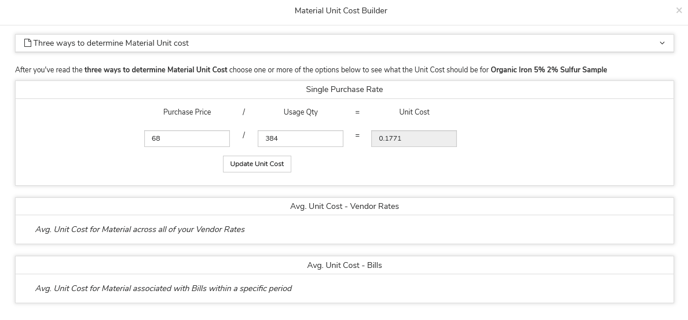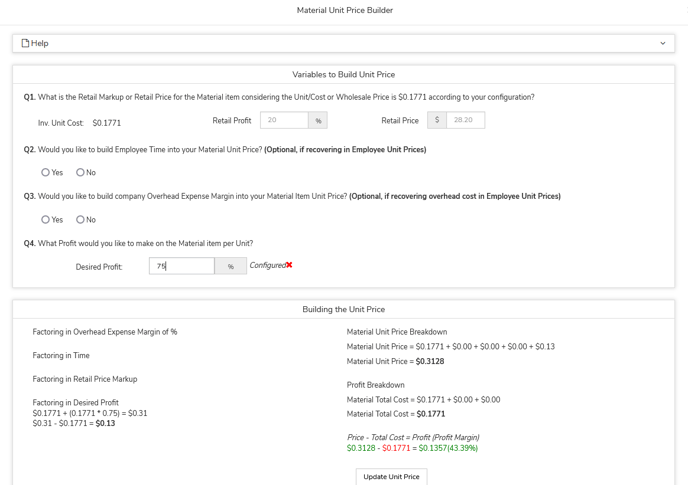In order to set up an inventory item in your database, you will need to navigate to the Settings menu, over to the Items column, and then down to the Material page. There, you should be able to double click on an material item that you would like to edit, or, if you would like to add a new material item, click on the + Add New button in the upper left hand corner.
Note: This article is only going to go over the main material page. Material Auto-Calculation and Material Mixtures will be covered in more advanced articles.

Once you reach the Material pop up, you can begin filling out the main Information tab.
Name - This is the name of the material item as you would like to track it in your database. Note: this is a required field.
Type - This refers the the type of material that the item represents in your database: Plant, Chemical, Mixture, Hardscape, Lighting, Irrigation, and Other.
Category - This setting allows you to break down your material listing. To add additional material categories to your database you will need to navigate to the Settings menu, over to the List column, open up the Categories drop down and then move down to the Material page below.
Unit - This is generally used as the unit of application, or, more rarely, the unit of mix in the case of a chemical being added to a mixture. For example, a mulch material item would have the unit cu yd, its unit of application, while the Organic Iron 5% 2% Sulfur would have the unit of fl oz as fl ozs of the material will be mixed with water.
Expense Account - This represents all of the Expense Accounts from your Chart Of Accounts in QB.
Income Account - This represents all of the Income Accounts from your Chart Of Accounts in QB.
Asset Account - This represents all of the Asset Accounts from your Chart of Accounts in QB. The Inventory Asset Account is required if you would like to export material to quickbooks.
Is Non Inventory - Each material item can be Non-Inventory if you would not like to track its usage in Quickbooks.
Show on Applicator Reports - Checking this box will make this item display on Applicator Reports. Applicator Reports are available under Reports > Business Reports > Inventory.
Unit Cost - The Cost to your company for each unit of material used as a service resource. When material items are added as services this will be auto defaulted in the 'Unit Cost' field.
Note: When you first get started with Arborgold, before you begin using the SCM feature, you can use the first option for the Material Unit Cost Builder (found under the Builder button next to the Unit Cost) Single Purchase Rate. This will calculate your material unit cost by using the equation Purchase Price / Usage Qty = Unit Cost.

Unit Price - The price you will charge the customer for each unit of material used. When material items are added to services this will be auto defaulted in the 'Unit Price' field.
Note: Much like for the Unit Cost, you can utilize the Material Unit Price Builder (found under the Builder button next to the Unit Price) to help calculate this number. For most clients: Q1 (What is the Retail Markup or Retail Price for the Material item considering the Unit/Cost or Wholesale Price is ? according to your configuration?) will be left blank; Q2 (Would you like to build Employee Time into your Material item Unit Price?) will be set to No as you will generally recover time in Employee Unit Prices; and Q3 (Would you like to build company Overhead Expense Margin into your Inventory item Unit Price?) will be set to No as you will recover overhead cost in Employee Unit Prices. The only option you will need will be Q4, where you can set your desired profit (if it has not already been entered on the Set Up page). This will calculate out your Unit Price.

